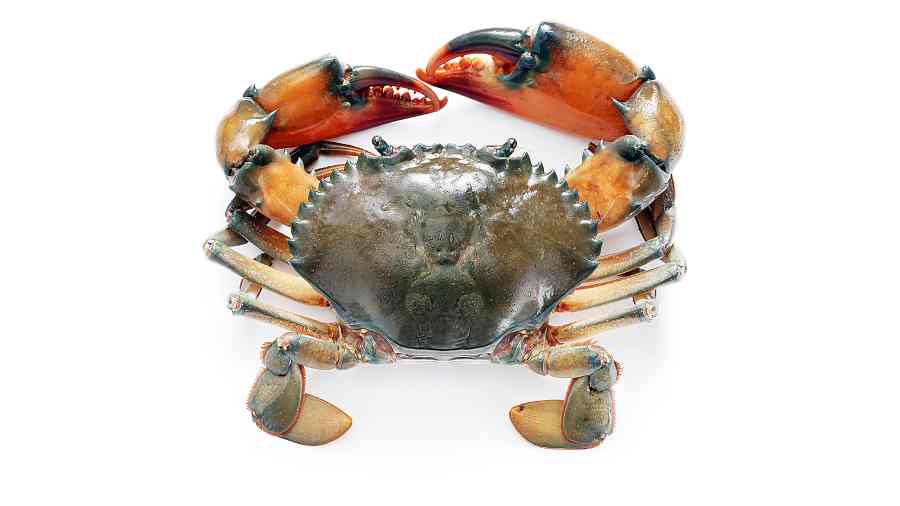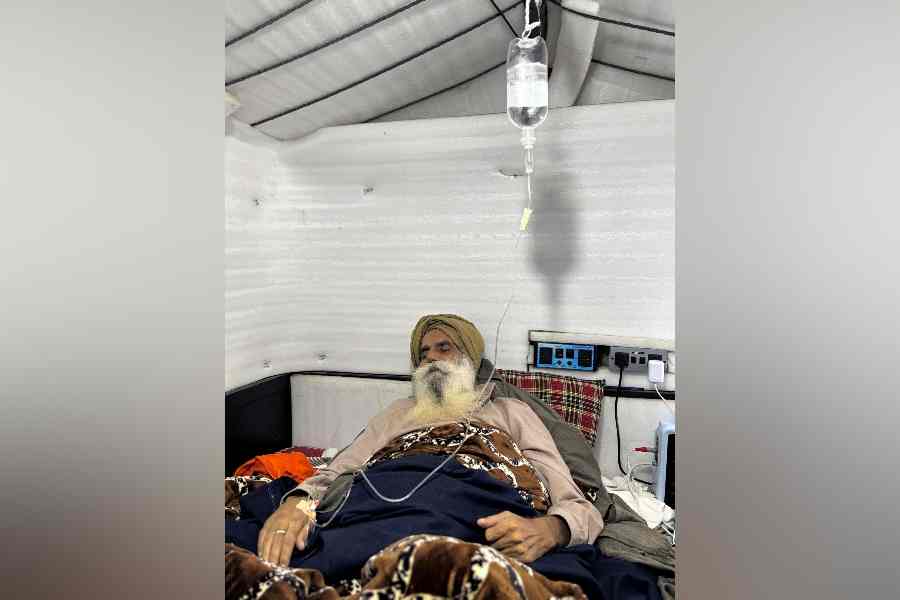When there was no other way out, Fagun Mondal of Madhusudanpur village in Lakshmikantapur, South 24-Parganas, decided to take to crab fishing. It was 2020 and he was just back from Tamil Nadu, where he had been working as a daily wager in an iron factory.
As a child, Fagun used to accompany the men from the family to creeks and canals in the neighbourhood to catch crabs. But the year he turned 19, his father sent him away to Tamil Nadu. His father Parashuram says, “It was an uncertain livelihood. Fagun wouldn’t have had a steady income.”
But the pandemic featured in no one’s calculations. Fagun says, “For 11 days (in Tamil Nadu), we did not know what to eat, what to drink. I thought I would never see my family ever again. And when I did manage to come back, Amphan struck.”
That August, when the crab-catching season began, Fagun decided to get to work.
The crab season lasts nine months. Approximately 1,50,000 people are directly involved in this profession and 5,000 to 7,000 people indirectly
Seasonal passes are issued by the forest department to crab catchers who go deep into the forest. Fagun did not have a pass but he went along with fishermen who had boat licences. So did Sandip Dolui, who is back from Kerala where he worked at a construction site, and Uttam Ghorai, who was employed at the Mumbai Port when Covid-19 struck.
“Licences are issued for boats. People who do not have a pass can also go along,” says Jagadish Chandra Mondal, who was the fishery extension officer of Hingalganj, Sandeshkhali 2 development block and Canning 1 development block between 2001 and 2014. He is now the district forest officer of Malda. Three to four people sail out to catch crabs in each boat. According to Jagadish, about 80 per cent of these fishermen do not have passes.
“They do not apply for one because the forest department issues passes only to those going into the buffer zone of the forest and not to the core area where crabs are in abundance,” says Swapan Mondal, who is a resident of Gosaba in the Sunderbans. The core area is the deep forest where no human activity is permissible. The buffer zone, which is an extension of the core area, is safer. “Most of them go illegally — sans passes, sans licences. This is why many crab catchers do not get any compensation when they are killed in tiger attacks,” adds Swapan.
Sanjay Dhara accommodates Kanhai in his fishing boat. “He used to go out in trawlers in Andhra Pradesh. An extra pair of hands helps,” he says.
Pradip Baidya, a crab catcher from Moirapara village in South 24-Parganas, says, “We stick thin iron rods into holes. If there is a clink it means there is a crab. We have to extract it without hurting or killing it.”
Every fisherman is not like Sanjay, does not own a boat. But the business is so lucrative that there is a practice of renting out boats — Rs 50,000 to Rs 1,00,000 for a season.
“A crab catcher will earn three times that money,” says Jagadish.
But in this story of licences and passes and the booming crab trade, how do migrant labourers fit in? The answer lies in the details.
The crab industry in Bengal is an old business, but in the last five to seven years, the state has become one of the largest crab exporting centres of India.
“The Sunderbans is one of the best breeding grounds for crabs,” says Jagadish. He adds that no other state in India produces mud crabs (Scylla serreta) and in such abundance.
The export value of crabs has skyrocketed. The price of export-quality crabs in 2001 was Rs 200-Rs 250 per kilo. These crabs are now being exported at Rs 1,500-Rs 2,000 per kilo. Local rates are anywhere between Rs 700 and Rs 800 a kilo.
To make the most of this supply and demand, manpower is the key. There are other aspects to this industry, such as crab farming and crab fattening, all labour-intensive.
Says Jagadish, “Crabs are farmed in salt-water ponds. This is being done in Haroa, Basirhat, Minakhan, Sandeshkali, Pathar Pratima, Gosaba — all in south Bengal.” He adds, “If someone catches crab with soft shells, which are not of exportable quality, they keep those in the ponds and treat them. They are exported once their limbs grow, their shells harden and their weight goes up.”
Traders in Bengal also source crabs from Gujarat and Odisha. This has been happening for the last five or six years. While exporters claim this is because they have activated an export route from Bengal to other countries, Swapan pins the reason on “indiscriminate crabbing in the islands”. In any case, these outsourced crabs also need to be nurtured.
Small and big export companies have come up near Jora Bridge, a locality in south Calcutta’s Santoshpur area. Here, crabs are sorted, tied, packed and sent abroad — basically more labour.
The crab industry was able to absorb the migrant labourers who came back during the lockdown. But will they go back now? Some will perhaps, but Swapan has come across many who have decided to stay. “We earn up to Rs 19,000 in five days when we go out on a boat. Where will we find this kind of income?” is the common refrain. Swapan adds, “It is bringing them the kind of money they did not find in the Sunderbans a decade ago.”
Uttam has just moved into his pucca house and Fagun has just bought a new phone. Fagun says, “I am earning enough. It is good to be home.”
This is the month of the crab, but that’s not all it would seem. This is crab season.
Lady Catch
Until 2020, Moyna Gayen used to live with her children in Lahiripur. Her husband worked in a shrimp-drying factory in Kerala. Her father-in-law had died in a tiger attack. But life had to go on. Moyna started sailing into the creeks inside the forest at night — crabs are nocturnal creatures. Her children stayed by themselves as she waited for high tide to pin a crab or two. Be it Moyna or Pushpa Gayen, Kabita Halder or Shuktara Gayen, it is the same story. Official figures show that 250 women of the Sunderbans have valid boat licenses.
“The actual figure is much higher,” says Jagadish Mondal.
Crab catchers can be divided into two categories — those who go into the forest when the season starts and those who live close to the riverbank and go out every day. Most women crab catchers belong to the second category.
Shuktara follows the news on her radio and pushes her boat into the river at low tide. She says, “We sail out in groups.” She concedes that many men have returned home and stayed on after the pandemic and adds, “But we have not stopped catching crabs.”
In the off-season, Pushpa and her sisters take the train to Baghajatin in Calcutta, where they tie crabs and pack them. Pratima ties 200-250 crabs a day. She says, “It is not something that men can do. It requires skill.”













